Where should hardwood be used?
Working with such wood is quite difficult, but it is still popular. Hardwood is often used for building houses and cladding. After all, the material is wear-resistant, and it can withstand heavy loads.
Durable wood is an excellent option for making flooring: laminate or parquet. It is also used to make aesthetically pleasing furniture:
-
chests of drawers;
-
kitchen tables;
-
swing-door wardrobes;
-
wall units;
-
beds.
All sorts of items are also made from hardwood: billiard cues, canes and chess pieces.
Please note! Wood has an excellent ability to resonate, in other words, to amplify sound vibrations. Therefore, it is perfect for the production of violins, guitars and other musical instruments.
Hardwood is used in the manufacture of railroad ties and bridges. Machine parts and souvenirs are made from durable materials.
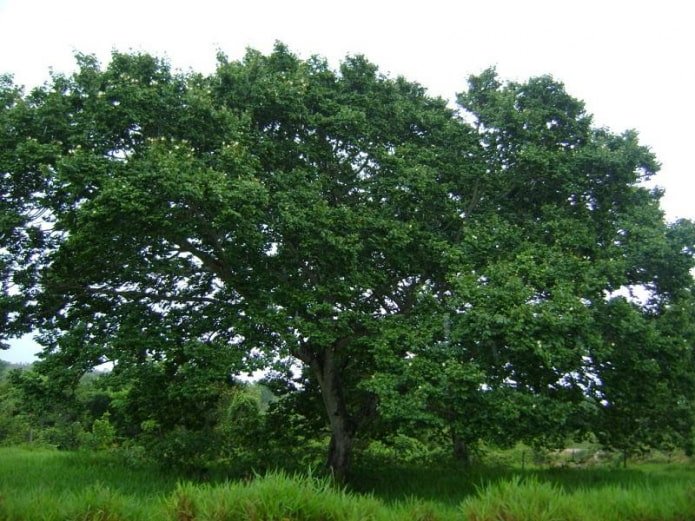
What affects hardness?
This property shows how well the wood resists the penetration of harder bodies, such as nails, screws or self-tapping screws. Moreover, each type of wood has its own hardness indicator. This parameter is most often calculated using the Brinell method. The essence of this method is as follows:
-
a metal ball with a diameter of 1 cm is pressed into a wooden workpiece using a press;
-
the depth of the spherical imprint remaining on the sample is measured;
-
the hardness of the wood is determined using the formula in units designated by the letters HB.
For your information. Brinell tables may contain the hardness number MPa. Thus, 10 MPa corresponds to 1 HB and 10 N/mm2.
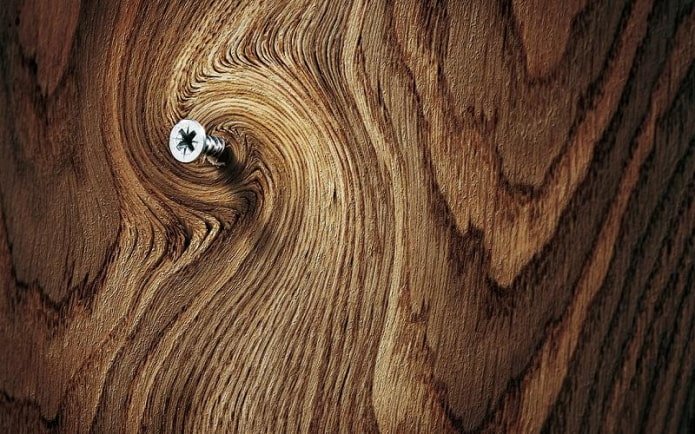
The hardness of the material is influenced by several factors:
-
Humidity. If the tree grew on dry soil, and not on marshy ground, then its strength indicators will be higher.
-
Age. The older the perennial plant, the harder and denser it becomes.
-
Harvesting time. Wood that was cut in the first month of winter is stronger than the last.
-
Growing conditions. Trees in cold climates grow more slowly, so their hardness is higher.
The strength of the material also depends on the direction of the cut. The cut can be end, tangential and radial.
The lateral hardness of deciduous trees is usually 30% lower than the transverse hardness. In coniferous trees, this figure reaches 40%.
Many species have the same radial and tangential hardness. The side surface of beech or oak lumber is 5-10% harder than the end surface.
What are the hardest species in the world?
Jatoba is a tropical tree. The material from it is highly durable, its hardness reaches 7 HB. Another name for jatoba is Brazilian cherry. The tree prefers to grow in the tropical forests of South and Central America. The color of the inner part of this representative is usually rich orange or red. Brazilian cherry darkens after cutting in just a few days. The color of the material becomes brick red.
African mutenia is not as hard as the previous tree, but according to Brinell it has a value of 5 HB. Its characteristic features are purple “rays” formed when the trunk is cut. Another shade of wood resembles the color of walnut. The material is highly hygroscopic, so mutenia cannot be covered with a primer or varnish. This does not affect its aesthetic appeal, because this type of wood has a natural shine and beautiful texture. African wood is often used to create furniture or floorboards.
Bamboo, which has a show of 4.7 HB. In fact, this is a reed, not wood. At the same time, its stem after lignification is no worse in performance properties than durable maple or acacia. Bamboo is harder than oak. This material has a golden-straw hue.
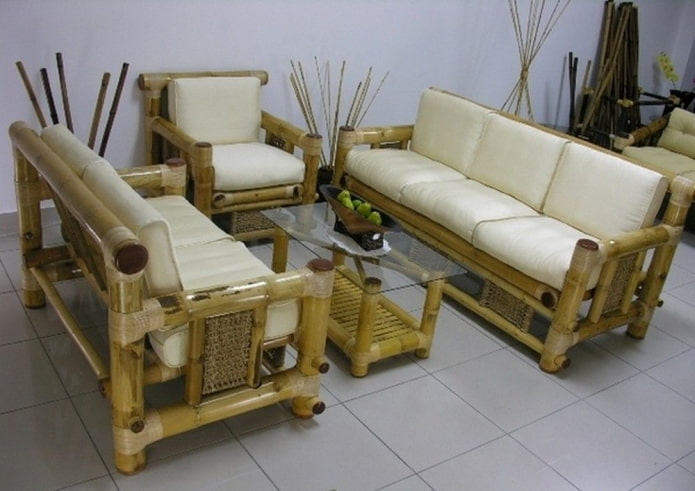
Rosewood has a hardness of 4.4 HB. This species is found in Brazil and Guatemala. Its color ranges from golden brown to dark. The material has a pleasant smell of fresh roses. This wood is easy to polish. It can be sawed and cut. Caskets, decorative boxes, cigar humidors, souvenirs, and musical instruments are made from this species.
Among the hard species, it is worth noting the bakout tree, whose homeland is India, South America, and the islands of the Caribbean. This wood has an amazing density, but it is too heavy and quickly sinks in water. It is difficult to process. The advantages of bakout include:
-
resistance to rot and pests;
-
excellent biostability;
-
good wear resistance.
After cutting, the tree gives off a specific but pleasant aroma, similar to cocoa or incense.
Sucupira is found in South America. This species is harder than Muthenia, its strength level is 5.6 points on the Brinell scale. It contains oily substances that protect the material from fungi and wood-boring beetles. Sucupira is difficult to process, but easy to polish and grind, it has good density.
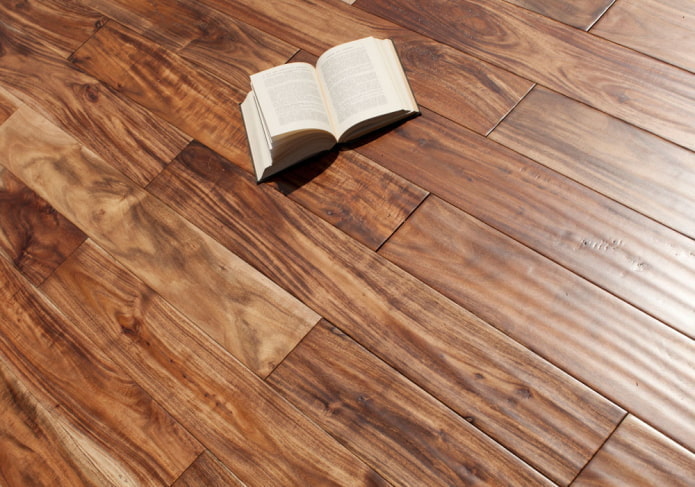
European walnut is a fairly large representative of the flora. It grows in Asia Minor and Europe. The hardness index of this wood species is 5 HB. The fibers of the boards are even and parallel. European walnut, found in Asia, is used to make the following things:
-
expensive furniture;
-
souvenirs;
-
flooring;
-
veneer.
Merbau is the wood of the Intsiya plant. Its strength reaches 4.9 points. The material does not dry out and is not afraid of water. The shade of the breed is brown with a red tint. The material is suitable for facing bathrooms. Merbau is used to create parquet or furniture. It is also used to build durable and reliable houses.
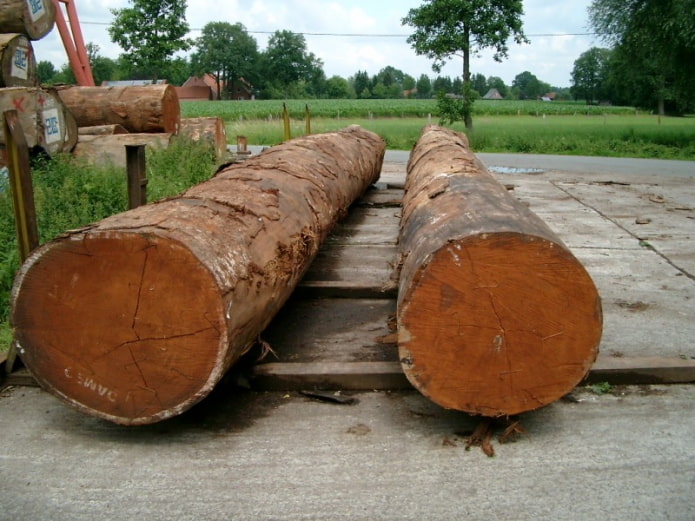
Wenge is an exotic plant. The tree grows in African countries. This valuable breed has a hardness level of 4.2 HB. The pores of wenge contain oily and mineral components. Such substances complicate the processing of wood. The main advantages of the material:
-
high density;
-
resistance to temperature fluctuations, humidity and decay;
-
good aesthetic properties.
Jarra amazonica is a hardwood with a strength rating of up to 6 HB, its habitat is South America. Its inner part is dark red or plum-colored. The outer layers of the rock have a brown or yellowish tint. The material is quite difficult to process, but easy to polish. Mainly, various souvenirs, interior items and boats are made from amazon jarrah.
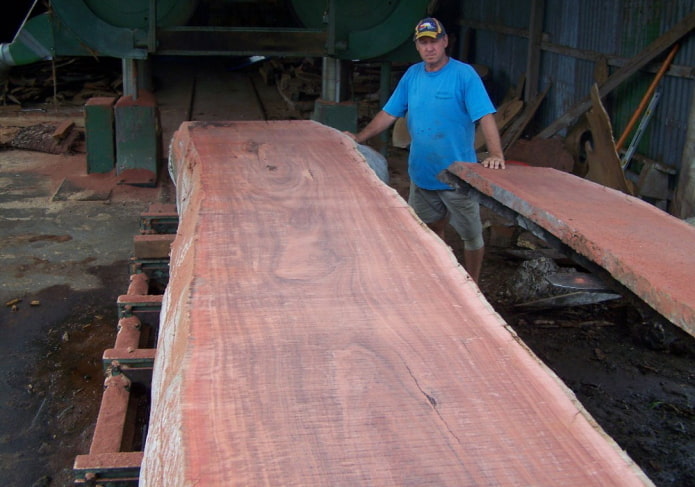
White acacia, growing up to 20-30 meters, is a dense and hard tree. Its indicators are from 3.5 to 5.4 HB. The plant is found in North America and many European countries. The color of the wood is light with a yellowish tint and a beautiful pattern. The mechanical properties of acacia are superior to ash and oak. The material is often used to make furniture and floorboards. Parquet made of this wood will last a long time.
Canadian maple has excellent hardness, the values of which are 4.8 HB. This representative of iron trees grows in North America, as well as in Europe. The material from it is attractive, dense and durable.
Boxwood is a valuable species. It grows in Africa, as well as in Eurasia. High-quality wood has excellent mechanical properties. Boxwood does not have a core, so it is often used in woodcuts and artistic carving.
Among the hard varieties, beech stands out. Its strength indicators are 3.8 HB. The deciduous plant can reach 35 meters. The wood can be processed with cutting tools, and it is also perfectly sanded. The hue of beech is usually white, but can be shaded with red and yellow. Annual rings are visible on the cut. The material is not only durable, but also quite flexible. The wood is usually used to produce various items: measuring or musical instruments, plywood sheets, parquet boards.
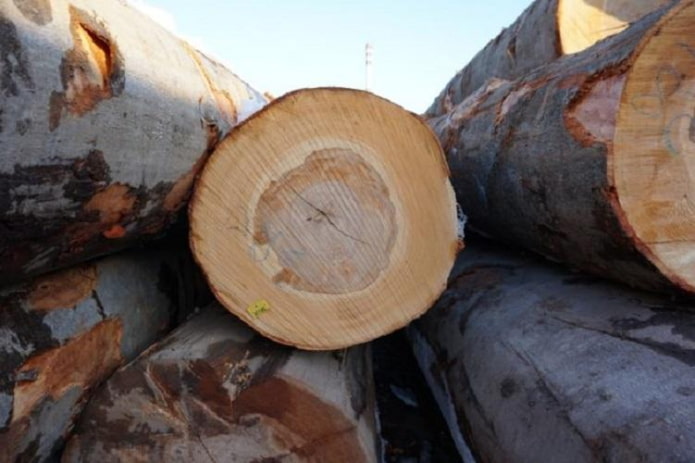
What species of wood with high hardness are there in Russia?
There are many trees with excellent mechanical properties that grow throughout the country.
Larch has only 2.6 points according to Brinell. However, the tree occupies a leading position in hardness among coniferous species. Its central part has a dark red color. Larch wood does not rot and is highly viscous, so it is not easy to process. The soft material is wear-resistant and durable. When moisture gets on the larch, it becomes harder. It is specially soaked to improve its strength.
Another representative of conifers is juniper. It also belongs to the softer varieties. In our country, there are about 30 species of this plant. The wood gives off a pleasant smell of pine needles, and it remains in the finished product for a long time.
The core of the juniper is brownish in color, and its sapwood is light yellow, light or greenish-yellow. The material from it is quite strong and dense, easy to process and polish. When cut on a lathe or sawn by hand, the wood does not chip. It is most often used to create toys, dishes, coasters and souvenirs.
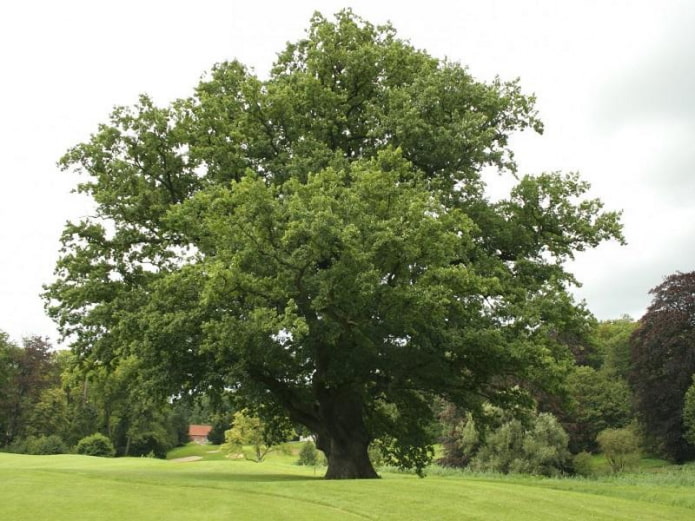
In Russia, oak is a unique example of hardness. This figure reaches 3.8 HB. The color of the wood is brown mixed with beige. The wood is resistant to moisture, external influences and decay. Its structure has high decorative qualities. The material is easy to polish and cut. Bog oak is especially valuable. The wood is obtained from trees that have been on the bottom of reservoirs for at least 2-3 years. When in water for a long time, the trunks become harder and darker. The material is used to produce many goods:
-
barrels;
-
railway transport parts;
-
parquet;
-
decorative furniture.
Ash has a hardness of 4.0 HB and a laconic texture. The tree is found throughout Russia. The wood is viscous, highly durable, bendable, and not prone to cracking. Its structure resembles oak. The shade of the material can be brown, light gray, or brown. The annual rings form a striped pattern. Ash is easy to process. Boards, furniture, veneer, or plywood are made from the wood.
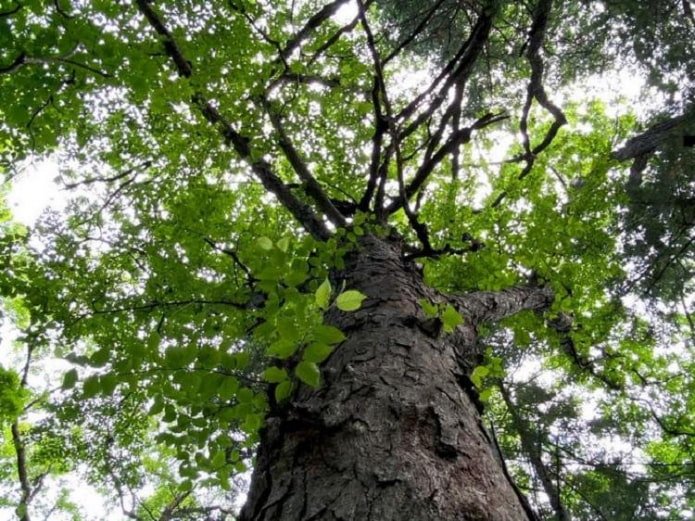
Schmidt birch, growing in Primorsky Krai, has good hardness. It was named after the biologist who discovered the species. The tree has dark purple bark, which darkens with age. Birch is found on the slopes of ravines at the outcrop of rocks, since it prefers rocky soil. The trunk of the tree is always in an inclined position. Schmidt birch is 1.5 times stronger than cast iron. The wood is resistant to external influences and is not subject to decay.
Hornbeam, a relative of birch, is no less hard. The tree is no worse in strength than oak. According to Brinell, it scored 3.7 points. The wood is light in color, mixed with thin sandy threads. Caucasian hornbeam is found in Russia. This wood is difficult to process and polish due to the peculiarity of the fiber structure.
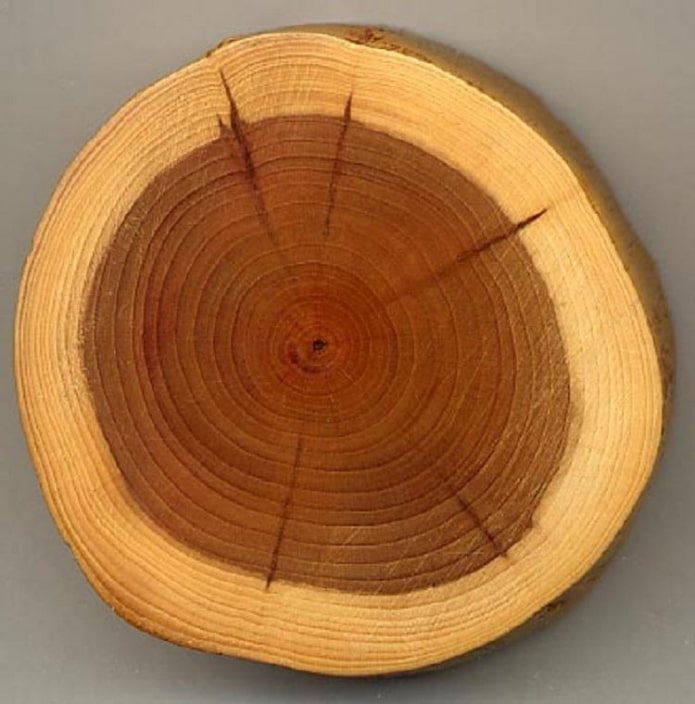
Cherry, growing in the south and central part of Russia, is very durable. Its hardness is 3.5 HB. The core of the tree is brown, sometimes with a red tint, and the bark is light with yellowness. Cherry material is elastic and dense, and it is also easy to cut and process. It has a beautiful texture. Cherry wood is suitable for making veneer, tool handles, souvenirs, toys and furniture. But it does not tolerate moisture well, so cherry items cannot be used outdoors. Precipitation can cause the material to rot and deteriorate. Wood-boring beetles can also ruin cherry.
Wood hardness is an important factor when choosing a quality material. If you need to create strong products, you should definitely take this parameter into account.
Now reading:
- Classic Living Room Style: 55 Photos and Interior Design Tips
- Tiles for a compact bathroom: 45+ photos, fresh interior design ideas.
- Which bathroom screen to choose? Description of types and materials.
- Chests of drawers for the living room: design ideas and photos in the interior of your home
- Ceiling in the children’s room: 75 photos of interiors, ideas for girls and boys.